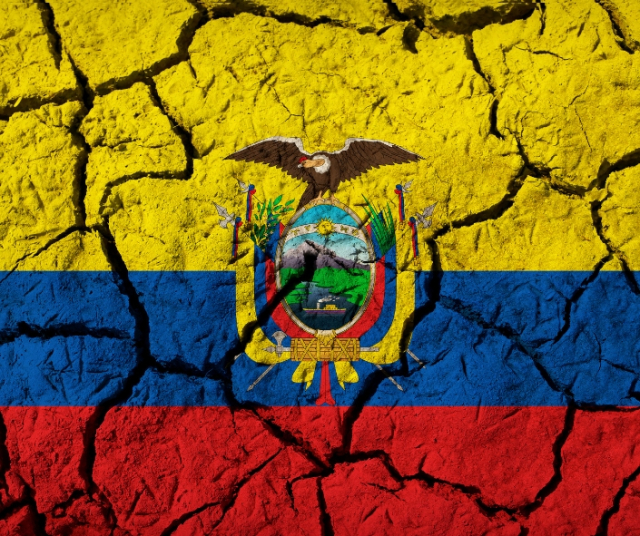The story of Ecuador's independence from Greater Colombia is a fascinating and complex chapter in the history of Latin America. This process took place in a context of significant political and social changes in the region, and was marked by internal conflicts, power struggles and regional rivalries. Join us as we explore in detail how this historical process took place, the factors that drove it, and the consequences it had for Ecuador and the region as a whole.
Historical background: The formation of Greater Colombia.
To understand the process of Ecuador's independence from Greater Colombia, it is necessary to go back in time and examine the historical context in which it developed. At the beginning of the 19th century, Latin America was under Spanish colonial rule, but independence movements were beginning to emerge throughout the region. In 1810, the independence process began in several Spanish colonies, including the Audiencia of Quito, which covered the territory that today includes Ecuador.
In 1819, Venezuelan leader Simón Bolívar proclaimed the creation of Gran Colombia, a republic that united Venezuela, Colombia, Ecuador and Panama into a single state. This project aimed to unify independence efforts in the region and establish a centralized government that could resist both internal and external threats.
Consolidation and challenges of Greater Colombia.
The creation of Gran Colombia in 1819 by Simón Bolívar was an event that raised hopes of unity and progress in Latin America. Bolívar's project aimed to unify independence efforts in the region and establish a centralized government capable of resisting both internal and external threats. During the first years of Gran Colombia's existence, the country experienced a period of relative stability and growth. Under Bolívar's leadership, important political and economic reforms were carried out, and the idea of a unified Latin American identity was promoted.
However, the consolidation of Gran Colombia was also marked by a series of challenges that tested the viability of the Bolivarian project. One of the main challenges was the geographical and cultural diversity of the region. Greater Colombia encompassed a vast expanse of territory, including mountainous regions, tropical jungles and vast plains, inhabited by a diversity of ethnic and cultural groups. Unifying these regions under a centralized government proved to be a monumental challenge, as cultural and political differences made it difficult to create a unified national identity.
In the case of Ecuador, integration into Greater Colombia was not free of controversies and conflicts. The Creole elite of Quito, which had played an important role in the independence process, was initially favorable to the union with Colombia. However, political and regional tensions arose, especially between Quito and Guayaquil, the country's two main cities.
In addition, Gran Colombia also faced significant economic challenges. Despite Bolívar's efforts to promote economic development and regional integration, Gran Colombia's economy remained primarily agrarian and dependent on the export of raw materials. The lack of infrastructure and a shortage of skilled labor hindered the development of key economic sectors, such as industry and commerce.
Another important challenge for Gran Colombia was the consolidation of central power in Bogotá and the management of regional tensions. Over the years, political and military conflicts arose between different regions of the country, fueled by historical rivalries and territorial disputes. In particular, the city of Guayaquil, in Ecuador, felt marginalized and underrepresented in the administration of Gran Colombia, which generated resentment and discontent among its inhabitants.
In this context of hope and challenges, Gran Colombia struggled to maintain its internal unity and cohesion. Despite the efforts of Bolívar and other political leaders to promote national unity, regional tensions and political conflicts continued to hinder the country's consolidation efforts. The lack of consensus on key issues, such as the political and administrative organization of the country, exacerbated internal divisions and threatened the stability of the republic.
The fight for the independence of Ecuador.
As time passed, tensions between the different regions of Greater Colombia intensified, and separatist movements emerged in various parts of the country. In Ecuador, discontent with the central government in Bogotá became increasingly evident, especially in Guayaquil, which felt marginalized and underrepresented in the administration of Gran Colombia.
In 1830, after a series of political and military conflicts, Ecuador finally declared its independence from Gran Colombia. On May 13 of that year, an assembly gathered in the city of Riobamba proclaimed the secession of Ecuador and established a provisional government headed by General Juan José Flores. This decision was the result of years of internal tensions and regional conflicts, as well as the desire of Guayaquil's political and economic elites to have more autonomy and control over their own affairs.
Consequences and legacy of independence.
The independence of Ecuador from Greater Colombia had important repercussions for the country and the region as a whole. In the short term, the separation process was marked by internal conflicts and power struggles, especially between Quito and Guayaquil. However, in the long term, independence allowed Ecuador to establish its own political and administrative system and define its national identity.
The separation of Gran Colombia also had broader implications for the region. The disintegration of the Bolivarian project reflected the internal tensions and regional rivalries that existed in Latin America at the time. Furthermore, it set a precedent for other separatist movements in the region and contributed to the political fragmentation that characterized much of the 19th century in Latin America.
The process of independence of Ecuador from Greater Colombia was a crucial event in the history of the country and the region as a whole. Although it was marked by conflicts and tensions, it also represented an important step in Ecuador's search for autonomy and national identity. This process continues to be the object of study and reflection today, as it continues to influence Ecuadorian politics, culture and society.
